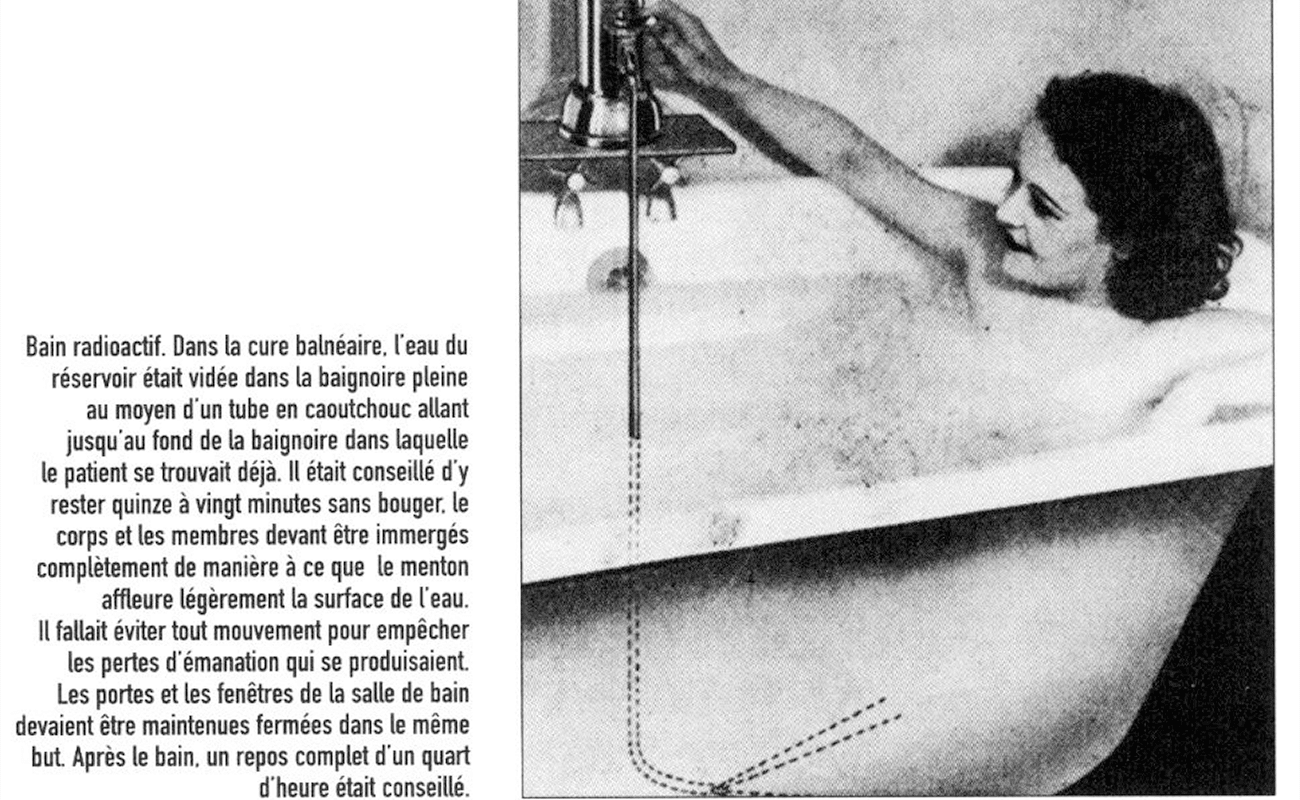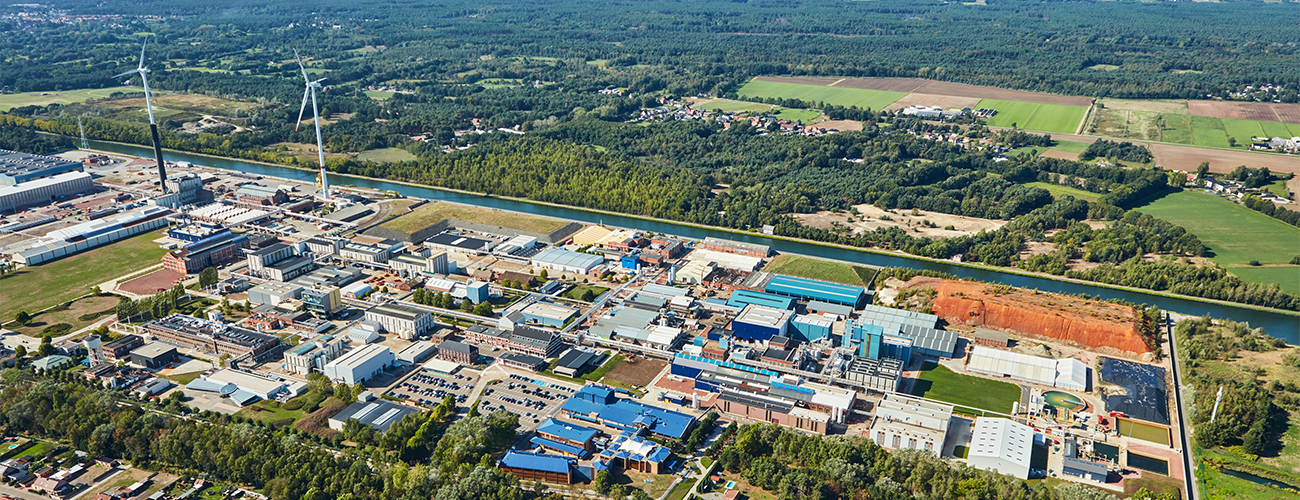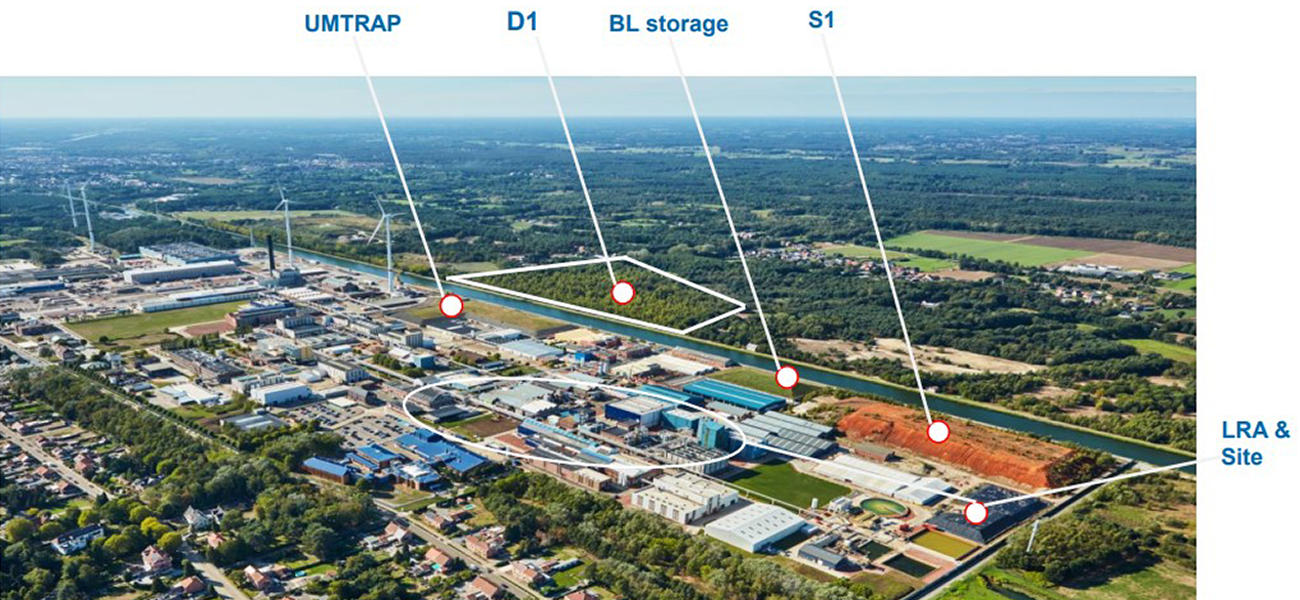Storage of historical radioactive waste in Olen well under control
Towards a sustainable solution for Umicore's radioactive legacy in Olen
Umicore's site in Olen, Belgium, has reinvented itself. Today, the site revolves mainly around research & development of clean, high-performance technologies and the production of high-tech materials based on cobalt, nickel and germanium. These can be found, for example, in rechargeable batteries, in the fiber optics industry or in lenses and solar cells for space satellites.
But the site also has a historical footprint. Umicore's predecessors produced radium and uranium products there from 1922 until the end of the 1970s. With the cessation of these historic activities, all buildings and installations containing radioactive materials were dismantled and remediated to ensure the safety of people and the environment. This was done under the supervision of the relevant government agencies and regulators who have continued to closely monitor these interim disposals ever since. The storage of historical radioactive waste is under control and poses no risk to human health or the environment.
Umicore's historical liabilities in Olen
From 1922 until the late 1970s, Umicore's predecessors produced radium and uranium products. For example, uranium oxide was used in fuel rods for nuclear power plants while radium served as a personal care product in the early twentieth century, for example against wrinkles. Nobel Prize winner Marie Curie regularly carried out experiments with radium in Olen. The element formed the basis for nuclear medicine and was the only cancer treatment until the 1960s. The use of radium as a healthcare product gradually declined as a result of new insights into its risks.

Storage of low-level radioactive material
In the late 1970s, the production of radium and uranium in Olen was ended. All radioactive buildings and installations were dismantled and stored according to the best available techniques and in consultation with the authorities. Radioactive waste from the production process was stored in the plant as stipulated in the permits.
The residues from these historical activities are low-level radioactive (mainly category A residues and a small amount of category B residues) and cannot be compared in any way with the high-level radioactive waste from nuclear power plants.
Storage is in strict accordance with the guidelines and under the control of the competent federal agencies, FANC/AFCN (Federal Agency for Nuclear Control), NIRAS/ONDRAF (National Agency for Radioactive Waste and Enriched Fissile Materials), the regional body OVAM (Public Waste Agency of Flanders) and in full transparency with the local residents around the site and the municipality of Olen.
These agencies regularly carry out detailed inspections on and around the site. The outcomes of these confirm each time that there is no danger for people and the environment.

Long-term solutions
A study commissioned by the Ministry of Public Health in the early 1990s showed that "at present, there is no danger for public health and the environment" in the immediate surroundings of the Olen site. At the same time, the study stressed that "an overall intervention concept for the full contamination problem in the area around Umicore in St-Jozef-Olen was essential" to ensure a safe transfer to future generations.
This led in 1993 to the creation of a monitoring committee responsible for the follow-up of all slightly radioactive zones outside of the plant's walls and the elaboration of the most appropriate solution for the permanent disposal of the historical radioactive waste.
Umicore cleaned up the contaminated buildings outside the plant to permanently improve the current situation and to provide effective protection for people and the environment in the long term. In addition, it put in place a monitoring program with an external radiation expert and periodic reporting to the authorities. This program involves inspections to ensure the perfection of the storage facilities, measurement of radon radiation, stability measurements, and monitoring of groundwater quality. The authorities have consistently confirmed that there is no risk to the health of employees, local residents, or the environment.
Umicore and the federal and regional authorities continued to work together and since 2009 have been dedicating efforts to find a long-term solution for the disposal of historical radioactive waste.
A clear legal framework
In early 2020, the federal government, through FANC/AFCN and NIRAS/ONDRAF, published a vision paper which proposes a definite destination for the waste to settle once and for all the historical radioactive legacy at the Olen site.
Following the vision paper, "Management of Radium Waste at Umicore in Olen", drafted by FANC/AFCN and NIRAS/ONDRAF, a working group was created in 2021 to develop the concept and to store the waste in a sustainable way in the long term. Depending on the specific radioactivity (Becquerel per gram), the memorandum prescribes various repository methods, ranging from above ground to underground storage, of under 300 meters.
The project, in which FANC/AFCN, NIRAS/ONDRAF, OVAM and Umicore are collaborating and for which a step-by-step plan was drawn up, includes the inventory, the creation of a legal framework and the design and construction of the necessary permanent disposal facilities.
The first phase of the roadmap was completed in early 2022. The second phase (the legislative and regulatory framework and the remediation options) of the roadmap is now underway to elaborate and determine the national policy and legislation for the remediation plan in Olen.
In the meantime, the Cabinet has approved a draft law for the remediation of sites in Belgium contaminated by radioactive substances. This draft law is awaiting approval by the State Council. This future law is one of the elements in a broader legal framework that will eventually allow for the remediation of land contaminated by radioactive materials. For waste containing radium, an additional legislative framework needs to be developed by FANC/AFCF and ONDRAF/NIRAS. Once this legislation is in place, Umicore can then develop and implement remediation and disposal options.
Umicore is fully committed to these steps with the objective of finding a sustainable solution to the radioactive legacy of the Olen site as soon as possible.
"Umicore is very pleased with this legislation, which brings clarity to this complex issue for all stakeholders. In Union Minière's working group on the remediation of historical radium activity, FANC, ONDRAF/NIRAS, OVAM and Umicore have been working together for some time to find concrete and sustainable solutions for this historical contamination.
This legislation is in line with our commitment and conviction as a responsible company, to manage our historical liabilities in the best possible way and to work out long term solutions.”
Pierre Van de Bruaene, Umicore Senior Vice President of Environment, Health and Safety.
Umicore has a good relationship and an open dialogue with its neighbors and with the local authorities. Through consultations, letters, site visits, and a 24/7 phone line, among others, we inform people living in the area and answer their questions.
Explanation of radioactive residue storage sites

Most of the tailings are stored in special facilities on the site, in line with the best available techniques, or in a former landfill. Another part, of which a fraction of the soil is radioactive, is located within a fenced former landfill off-site.

Contains the radium remnants, stored in concrete bunkers and covered with a copper containment; contaminated soil from the remediation of the old plant; and contaminated materials. The site is covered with a capping layer of clay, sand and gravel.

Contains contaminated soil from the remediation of the Bankloop stream where liquid effluents from the radium plant used to be discharged.

Contains contaminated soil originating from infrastructure works on the Olen site and from its remediation.

Contains residues from the production of non-ferrous metals, partly contaminated with radium, and some of the dismantling debris from the former radium production building.

Contains residues from the production of non-ferrous metals and a limited amount of sludge contaminated with radium.



